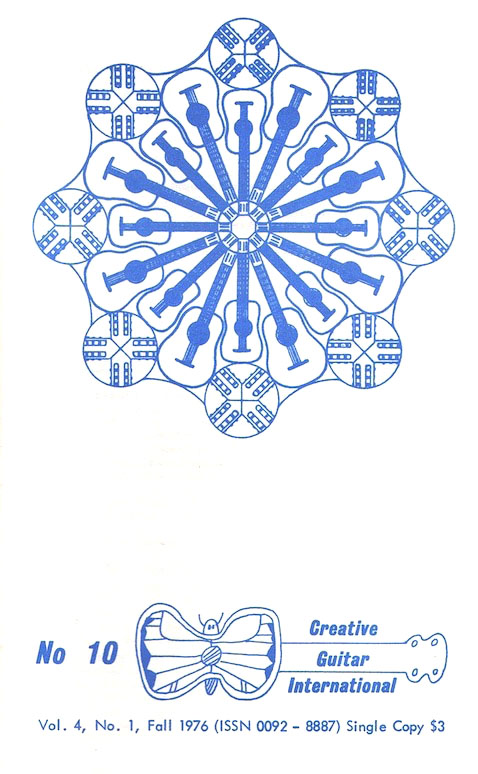
|
|
||
 |
||
|
|
||
Content highlights:
American guitar music: forgotten repertoire - Peter Danner
Guitar in England - Ruth & Jerry Mock
More on guitar syllabuses
Scott Tennant at 15
|
|
||||||
|
|
||||||
|
|
||||||
|
CREATIVE GUITAR INTERNATIONAL
© 1976 by Ruth and Jerry Mock, editors and publishers, Creative Guitar International is a classic guitar magazine published three times a year, in the fall, winter and spring by Mockingbird Press, Box X, Alpine, TX 79830, USA. Subscription rates are $8.50 a year; two years $16. Overseas subscriptions by surface mail. For overseas air mail subscription add $3 a year.
CONTENTS
|
||||||
|
Some notes on a forgotten repertoire
By Peter Danner
Among the benefits of the American Bicentennial this past summer, was the opportunity it afforded countless music lovers to hear examples of our past musical heritage. Along with performances of James Hewitt's hapless Battle of Trenton and Richard Wagner's impossible Centennial March, there were numerous occasions through the country to be introduced to such pleasant surprises as the music of John Knowles Paine. For guitarists, however, examples of American guitar music were conspicuous for their absence. Perhaps most Americans interested in the classical guitar are unaware of the vast quantity of guitar music written in this country over the past 200 years. To be sure, much of it is bad (although no worse than Hewitt surely) but some of it is well worth more than a second look.
Americans are apt to view their guitar heritage in terms of cowboy songs and Mississippi Delta blues rather than in the more urban forms of the drawing room and recital hall. Yet, from Colonial times, we can discover numerous references to guitars in sophisticated circles. For example, an entry in a gentleman's journal dated July 6, 1774 states:
Mrs. Carter being found despondent by her husband, an attempt was made to cheer her. "Call in Nancy (a daughter) to her Guitar,." says the Colonel. In she minces slow & silent from her supper—She scratches her instrument after a long preparation, into the air of 'Water parted from the sea.'
George Washington is known to have ordered guitar strings from England for his niece and Leigh Hunt mentions in his Diary that it was none other than Benjamin Franklin who offered to teach Hunt's mother to play the guitar. Such 18th century references to the guitar probably refer to the English "guittar" or cittern, both highly fashionable at the time, not to the guitar as we know it today. Both these instruments had wire strings and were played with a plectrum. The English guitar was tuned to an open C major chord: C-E-G-c-e-g.
Early American music publishing was centered in Philadelphia and it is from here that we find most of the earliest examples of printed American guitar music. George Willig's Music Store issued perhaps the first guitar method to appear in the United States. This was published in either 1816 or 1817 under the title "New Instructions for the Spanish guitar, containing a variety of songs and pieces. By a professor." A copy belongs to the Antiquarian Society of Wooster, MA.
As the effects of the industrial revolution spread in the New World, the middle class grew and with it an interest in music as recreation. Indeed, in the years before radios and automobiles, music making was a prime source of home entertainment. Most of the music published in the 19th century, not only in this country but in Europe as well, was not addressed to concert performers at all, but was intended for performance in home parlors. Being self contained, the piano and the guitar were
|
||||||
|
Cover 3
6 8
10 12 12
16
19 20
23
|
drawing by Reed Maxson
American Guitar Music: Some Notes on a Forgotten |
Peter Danner John W. Tanno
John W. Tanno
Richard Stover
Richard Stover
Ruth and Jerry Mock
|
||||
|
Repertoire
How to Collect Solo Records
A Basic Library of Solo Classic Guitar Recordings Currently Available
Interview with Rodrigo Riera List of music and discography on Riera Guitar in England |
||||||
|
Three Sizes of Guitars, with photo showing regular, requinto and tercerola guitars
Back Issues Available, listing contents of back issues
How to Get, Promote Concert. Contains suggestions for both artist and sponsor on how to arrange and put on a program Wide Repertoire Listed. Second of a series on syllabuses in England, Australia and Mexico. Includes biographical sketch of Leo Brouwer and photo by Wynn Smith List of music used for teaching in grades 3 and 4 (lower intermediate)
Madison Group Organizes. Includes photo of Michael Wright who has applied for certification as a guitar teacher Michael Wright Society items from Melbourne, Australia; Seattle; Houston
Sor's Daughter Performed at 8. About Sor in Warsaw Frank Wagner Sor Studies Recorded. Review of a new record by Jose Lopdtegui
Polish Music Lyrical. Reviews of music by Stanislaw Mroriski and a transcription of music by Karl Kohaut Reed Maxson Reviews of music by Lance Bosman and a book by Lois Shishido
Good Technique, Boyish Smile. Review of a recital by Scott Tennant with picture of Tennant (p. 33) Ruth Mock Festival Planned in Martinique; Bonell to Make Ensemble Recording (By Colin Cooper)
|
||||||
|
25 27
28 28 30
31
32 32
34
35
36 37 38 38 39
|
||||||
|
Almeida Follows Premier of His Work; Eastman Awards Summer Scholarships
Letter From England: Bream Event Duarte Conceals Publisher Names Practice Injures Hand Classic Guitar Teacher Directory Petschauer Urges Ensemble Programs |
Course Planned in Mallorca;
|
|||||
|
Graham Wade
|
||||||
|
|
||||||
|
|
||||
|
CREATIVE GUITAR INTERNATIONAL
|
||||
|
|
||||
|
favored instruments. In the years before the Civil War, many popular songs, including those of Stephen Foster and Henry Russell, were published in two versions: One for the piano, one for the guitar. Among Philadelphia musicians writing and arranging music for guitar in the 1820s and 1830s, were Leopold Meignen, Francis Weiland, and Adoir Schmitz. Meignen was a publisher and orchestral conductor who remained active for many years. His name appears on hundreds of guitar arrangements and guitarists, even today, may occasionally run across one Of his pieces in anthologies with no idea of its American origins. Schmiltz was a German violinist who settled in Philadelphia by 1820.
Guitarists did appear in concert and American audiences even had the chance to hear European artists. Perhaps the first European concert guitarist to perform in the U.S. was the Spanish expatriate A. F. Huerlsi y Katuria, author of the Spanish national hymn. Huerta appeared in New York in 1824under the patronage of the New York Philharmonic Society A reviewer in the National Advocate of May 18, 1824, "Listened wllh great surprise and gratification to the execution and effect produced by Signor Huerta."
Among the best American guitar composers from the pre-Civil War era was John B. Coupa. Virtually nothing is known about him other than that several of his pieces were published in New York during the 1 840s including waltzes, an outstanding set of variations, and a fantasia based on Bellini's opera Norma. Coupa's music is difficult, but of great interest. A serious attempt should be made to locate further examples of his music.
Much more is known about more recent American guitar composers. With the help of Vahdah Olcott Bickford, John C. Tanno, and other colleagues of the Guitar Foundation of America, I have been able to compile satisfactory biographies of many of them. Space allows mention of only a few.
Among the most interesting, must figure Justin Holland, perhaps the first black man to dedicate his career to the classical guitar. Holland was among the most influential American guitarists of his generation and author of an exceptional guitar method. He was born in Norwalk, VA. in 1819 and died in Cleveland in 1887. Holland studied guitar with William Schubert in Boston and moved to Ohio in 1841 where he was a student at Oberlin College. The rest of his life was spent in Cleveland where he was active as a teacher and arranger. Holland's Method, published in 1876, stands as the finest sythesis of guitar pedagogy to appear in America in the nineteenth century. Although he arranged many pieces for guitar, Holland's original compositions were few.
William O. Batemann was another remarkable mid-century guitarist. His major claim to fame is as the teacher of William Foden who became the most celebrated of all past American guitarists. Batemann was born in New Jersey in 1825 and spent most of his life in St. Louis where he died June 25, 1883. He was a professional lawyer and viewed his musical activities purely as a hobby. Most of his compositions date from the 1850s and offer the performer numerous technical challenges.
|
Manuel Y. Ferrer and Luis T. Romero were two guitarists of Hispanic background active in California. Ferrer (1828-1904) was born in Baja California, but spent most of his life in the San Francisco area as a teacher and performer. A collected edition of his music was published in San Francisco in 1882 and republished posthumously in 1910 by Oliver Ditson Co., of Boston. Vahdah Olcott Bickford is among his last surviving students. Romero, born in Madrid in 1854, moved to San Francisco as a boy and studied guitar with Miguel Arrevalo. Romero became a guitar teacher in San Jose and eventually moved to Boston where most of his music was published. He died of tuberculosis in 1893.
Other American guitarists worth a mentioning. include Charles de Janon (1834-1911), Charles
|
|||
|
Dorn (1839-1909) andWalterJacobs. De Janon, a native of Colombia, came to New York at six. His music shows him to be among the most serious minded of all American guitarists. De Janon was probably best known for his widely used edition of Carcassi's celebrated guitar method. Dorn's music was in a lighter vein, but well suited to the instrument and fun to play. Another composer of light guitar music was the irrepressible W. L. Hayden, whose guitar activities commenced in the 1860s. By 1886, Hayden had reached at least opus 798, much of it unbelievably bad.
William Foden was, without a doubt, the most celebrated American guitarist before
|
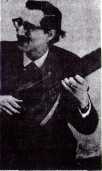 |
|||
|
Christopher Parkening. Born in St. Louis
|
||||
|
in 1869, Foden began to study the violin at 11; only later was he drawn to the guitar. Foden
|
Dr. Peter Danner is editor of the lute Journal
|
|||
|
favored the variation form and wrote variations on "Old Black Joe," "Alice, Where Art Thou," and the familiar "Listen to the Mockingbird." Foden retired to St. Louis where he died at 87 in 1947.
Foden outlived the first great period of guitar popularity in this country. By the turn of the present century, interest in solo guitar playing was slowly being replaced by the fad of the mandolin orchestra. The advent of the player piano and changes in musical taste (for example, the rise of ragtime) further contributed to a waning interest in solo guitar playing. To most of us, the tradition of American guitar music has all but been forgotten. However, perhaps today with interest in the classical guitar at an all time high, it is time to re-examine the wealth of material left us by guitarists in the U. S.
|
||||
|
|
||||
|
|
||||
|
|
||||
|
|
||||||
|
CREATIVE GUITAR INTERNATIONAL
|
6
|
|||||
|
|
||||||
|
7
|
||||||
|
|
||||||
|
How to collect solo records
|
Schwann II. Schwann has just published an Artist Issue, the first since 1966, that lists guitar recordings by guitarist on pages 133-135. All of the Schwann catalogs are available from record dealers or can be found in most libraries.
There are also comparable current catalogs of recordings available in Europe, such as the excellent quarterly Gramophone Classical Record Catalogue for Great Britain, the annual Diapason for France, and the Bielefelder Katalog for Germany. There are, of course, catalogs for other countries as well, although they are generally less accessible. Record companies throughout the world also distribute free lists of their recordings from which one can gain additional information.
Another excellent source of information is a good record dealer. One that the writer has found particularly helpful is Vogue Records and Tapes, 1025 Westwood Blvd., Los Angeles, CA 90027. The Spanish Music Center, 319 W. 48th St., New York, NY 10036 has its own label and regularly issues lists of available recordings. Peters International, 619 W. 54th Street, New York, NY 10019 regularly publishes lists of imported classical recordings which, although not free, aid in finding import records. There are countless other record dealers in most cities in the United States that can greatly aid the collector.
|
|||||
|
By John W. Tanno
This article is the first of a series which will be devoted to the selection of classic guitar recordings for developing a basic collection. There are presently some 200 classic guitar recordings in print and available in the U.S. There are more than twice that many available in the rest of the world. Unless one has three or four thousand dollars, it is necessary to select from those available what one can afford. Hopefully the selection will include the best recordings and be representative of the current stale of the art. This series will provide guidance for selection and a list of recommended recordings.
The first article is confined to recordings for the solo classic guitar. Other articles are planned for the guitar duo, chamber music, the avant garde, and the concerto. They will be limited to long-playing discs (33-1/3 rpm), since there are few recordings
available on cassette or reel-to-reel tape. All recordings listed are in print or were
at the time of writing unless otherwise noted.
There are several ways to go about collecting guitar recordings. One could collect recordings by composer, selecting representative works from the repertoire and looking for recordings of them. One could also select material by musical period, e.g., representative works from the Baroque, Classical, Romantic, and Contemporary eras. However, it seems easier to approach the solo repertoire through the performer, since recordings are generally devoted to a single performer. It is lamentably true that the repertoire for the guitar is not nearly as extensive as that for other instruments (such as piano or violin), so that it is impossible to avoid several different recordings of the same work. In fact, the more popular repertoire may be found in a dozen or more versions. On the one hand it is instructive to hear renditions of the same work by several guitarists. On the other hand, with limited funds to buy recordings, it is disconcerting to have to pay for the same work over and over again, particularly if il is a work for which one does not have a special affinity.
There are a few basic discographies one should be familiar with in order to find out what recordings are available. Ronald C. Purcell has recently compiled an indispensable Classic Guitar, Lute, and Vihuela Discography (Melville, N.Y.; Belwin-Mills, 1976). Readers will also be interested in his Andre's Segovia: Contributions to the World of Guitar (also published by Belwin-Mills ), which lists alI known Segovia recordings. Of paramount importance for the American record buyer is the Schwann Record and Tape Guide. This is now published in two formats: Schwann I which appears monthly and Schwann II, a semi-annual supplement to Schwann I, Both should be consulted regularly for they make up the most authoritative listing ol recordings in print in the United States. Each issue of Schwann J_contains a section in front called "New Listings." Reading this section will enable one to keep current with new recordings as they are released,including those that will eventually be listed in
1 Music Librarian at the University of California at Riverside.
2 For a review, see Vol. 1, *3, pp. 9-11. |
||||||
|
The next step after finding out what is available, is to try to seek some evaluative judgment to aid in deciding which recordings to buy. Reviews of recordings regularly appear in guitar journals, such as Creative Guitar International, Guitar Foundation of America Soundboard, Guitar, Guitar Review, "il Fronimo, " Guitar and Lute, and Guitar Player. Periodicals devoted to recorded sound such as Audio, High "Fidelity, Gramophone, and Stereo Review also carry occasional reviews of guitar records and these are available in most public libraries. Of particular assistance is the "Index to Record Reviews" compiled by Kurtz Myers and published in each issue of Notes, the quarterly journal of the Music Library Association. This index gives a quick synopsis of the critical opinion regarding each listed recording utilizing a set of symbols and covers reviews appearing in some 14 journals.
Armed with some basic sources listing what isavailable, and some critical sources for evaluating those recordings listed, one can now begin to build a basic library of guitar recordings. Who are the important guitarists that should be represented in a basic library of classic guitar recordings? For convenience, the guitarists represented on recordings currently available may be divided into four categories.
The first consists of four most frequently recorded guitarists: Julian Bream, Andres Segovia, John Williams, and Narciso Yepes, all of whom have 20 or more recordings currently in print. One should plan to acquire two or three recordings of each for a basic collection. Ultimately, the selection becomes a matter of taste and readers are advised to consider different recordings than those listed to represent each artist.
The second category is made up of guitarists of the older generation who are internationally famous and still actively pursuing concert careers. These are:
|
||||||
|
Almeida, Laurindo Behrend, Siegfried De la Torre, Rey
|
Diaz, Alirio
Lagoya, Alexandre Ramos, Manuel Lopez |
Tarrago, Renata Walker, Louise Ybarra, Ramon
|
||||
|
|
||||||
|
|
||||||
|
CREATIVE GUITAR INTERNATIONAL
|
8
|
2-RCA VCS 7057. Spanish Guitar.
|
The Art of
|
SUPRAPHON 111-1230. Louise Walker Guitar Recital. YBARRA, RAMON WEST 8142. Classical Guitar of_ the 16th-19th Centuries.
CATEGORY III BARBOSA-LIMA, CARLOS WEST 82509. Carlos Barbosa-Lima Plays Scarlatti.
BLANCO, DIEGO
DISCOFIL SLT 33189. Diego
Blanco. BOYD, LIONA
LON CS 7015. Classical Guitar.
Formerly issued as BOOT BMC -
3002. BROUWER, LEO
SELECT CC-15009. Mflsica
para Guitarra.
BYZANTINE, JULIAN
CLASSICS FOR PLEASURE
SCFP 40209. Julian Byzantine
Plays Guitar Music of Villa -
Lobos. CACERES, OSCAR
ERATO STU 70904. Les Grandes
etudes pour guitare, vol. 2.
(Florilege de la guitare, 19.) GHIGLIA, OSCAR
ANG S-36849. The Spanish
Guitar of Oscar Ghiglia. ITURRI, RAFAEL
ALPHA DB 199. Rafael Iturri
a la Guitare. MACALUSO, VINCEN5 0
KLAVIER KS-552. Tl e 10-
String Guitar. PARKENING, CHRISTOPHER
ANG S36069. The Christopher
Parkening Album.
ROMERO, ANGEL ANG S-36094. Angel Romero: Spanish Virtuoso.
SANTOS, TURIBIO
ERATO STU 70913. Musique
Brgsilienne. (Fl or ilege de la
guitare, 20.) WALKER, TIMOTHY
SAGA 5426. Timothy Walker
Plays Baroque Music.
|
||
|
The only one who does not have a solo album in print is Ramos, which is a pity, for his recording of the Bach Chaconne (Boston 8216) released in 1961 is perhaps the finest ever recorded .3 A basic record collection should at least contain one album by each of these guitarists.
The third category is represented by a younger generation of guitarists who are gaining fame:
|
SEGOVIA, ANDRES 2-MCA 2535/6. The Guitar and I. The maestro discusses his life and art in addition to performing some standard pedagogical works. Formerly issued as DEC DL 710179 and DEC DL 710182. 3-MCA 19000. Golden Jubilee. A good representation of Segovia's art. Formerly issued as 3-DEC DX-148. RCA ARL 1-0864. Intimate Guitar. The more recent sound of Segovia. A second volume was just released: RCA ARL 1-1323.
WILLIAMS, JOHN COL M-30057. Spanish Music. COL M-31407. John Williams' Greatest Hits.
2-COL M2-33510. Bach: The Complete Lute Music on Guitar.
YEPES, NARCISO DG 139364. Sor: 24 Studies. 2-DG 139365767 Spanish Guitar Music of Five Centuries. Vols. 1 and 2.
LON STS 15224. World of the Spanish Guitar.
CATEGORY II ALMEIDA, LAURINDO ANG S-36064. Clair de Lune: Romantic Studies.
BEHREND, SIEGFRIED
DG 2530561. Chitarra Italiano. DE LA TORRE, REY
EV3358. Rey de la Torre plays
Spanish Guitar Classics. DIAZ, ALIRIO
EV3155. 400 Years of the
Classical Guitar.
Also issued as MUSIDISC RC 784 LAGOYA, ALEXANDRE
PHILIPS 6599760. Lagoya. TARRAGO, RENATA
COL CS 8567. Renata Tarrago.
Issued with the Alhambra label. WALKER. LOUISE
|
|||||
|
Barbosa-Lima, Carlos Byzantine, Julian Marcaluso, Vincenzo Blanco, Diego Caceres, Oscar Parkening, Christopher
Boyd, Liona Ghiglia, Oscar Romero, Angel
Brouwer, Leo. Iturri, Rafael Santos, Turbio
Walker, Timothy
|
||||||
|
If the funds permit, a basic collection would contain one recording for each of these artists.
The fourth category consists of other guitarists who are well worth hearing, but are less well known in the United States:
|
||||||
|
Barrense-Dias, Jose Bartoli, Rene Cubero, Manuel Gomez, William Ivanov-Kramskoi, Alexander Lara, Roberto
|
Navascufis, Santiago Moroto, Sebastian Rubio, Miguel Sainz de la Maza Regin Sao Marcus, Maria Livia
|
|||||
|
A selection of some of these guitarists could be required for a basic guitar collection. In order to save space, the reader is referred to the "Current Discography" column in the last four issues of CGI from which appropriate recordings may be selected.
There is always a problem with any listing of guitarists such as attempted in the categories above. Occasionally a relatively unknown artist will produce a recording of unusual quality which would not normally find its way into a basic collection of recordings. A case in point is a recording of Vladimir Mikulka entitled Composition-. byJ.S. Bach (Supraphon 111 1585). This recording was produced in 1974and reveals arTexceptional, sensitive talent. He plays the music of Bach with a clarity and musical understanding that successfully competes with the world's most famous guitarists. But then this is part of the fun of building a collection, and it is often the little known recording that produces the greatest pleasure. All this is by way of illustrating an important point: One should always keep an eye out for new recordings of special merit to add to the basic collection.
|
||||||
|
A Basic Library of Solo Classic Guitar Recordings Currently Available
|
||||||
|
CATEGORY I BREAM, JULIAN RCA ARL 1-0049. 20th Century
|
Guitar. RCA LAS 3156. Romantic Guitar.
|
|||||
|
3 However, for a recent Ramos recording, see CGI, Vol. 3, *3, p. 19.
|
||||||
|
|
||||||
|
|
|||||
|
CREATIVE GUITAR INTERNATIONAL
|
10
|
11
|
|||
|
|
|||||
|
Interview with
Rodrigo Riera
|
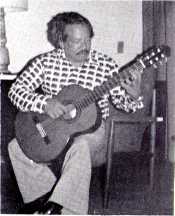 |
around me. Sometimes a certain sound or word can serve as the source of inspiration. For example, take the word 'carnaval' --three syllables: Car-na-val. To me it suggests a three-beat phrase with a strong last beat (the Spanish pronunciation). I may repeat this phrase over and over till an idea comes. This is just a hypothetical example. Sometimes a melody will come to me complete with bass line and accompaniment. Other times one note will come and spontaneously will be followed by 10 more. It is difficult to explain the subconscious process of creativity. I usually write without my guitar using solfegge and make necessary corrections when I play the newly-conceived piece on my guitar. Imagination is very important, but needs knowledge and experience to be realized. Imagination without knowledge is zero."
Riera has written some 60 works for guitar. 12 of which have been edited. He thinks that the future of the guitar is very bright because many composers today are becoming interested in the instrument. He also feels that the guitar music from Latin America will become more important in the guitar repertoire, particularly Argentine and Venezuelan music.
"Each country utilizes those instruments which best fit its idiosyncracies. The century and prevailing style determine this. I love Renaissance and Baroque music--it is very healthy. Most of the so-called 'aleatoric' music does not appeal to me. Human culture should not be'dehumanized'. When music departs from using folklore and popular themes for its inspiration, it is lost. Everything comes through folk and popular sources."
Riera practices about three hours daily, and about six when concertizing. He plays a Ramirez and uses Augustine strings. He is a very strong player who one minute will play a prelude of Bach and the next minute launch into a fiery Argentine tango. "Playing folklore and playing classical are two different things. Each has its own style and one must know these differences to be a successful interpreter of each."
|
|||
|
By Richard Stover
Rodrigo Riera was born Sept. 19. 1923 in Carora. state of Lara. Venezuela. When he was about eight he began playing the
|
|||||
|
|
|||||
|
cuatro and folk music.
|
RODRIGO RIERA
|
||||
|
"My father was a trained musician and played the clarinet. From him I learned the basics of music."
|
|||||
|
In 1945 Riera and his good friend Alirio Diaz arrived in Caracas to study guitar with Raul Borges. "We studied Tarrega, Aguado. Carcassi. Sor. Carulli—all the basic preparatory literature."
By 1952 Rodrigo went to Madrid where at first he studied with no one, eventually enrolling in the Royal Conservatory and completing the guitar course. He remained in Spain until 1960. each summer attending when possible the courses for guitar conducted by Segovia in Siena, Italy.
From 1960-62 he was back in Venezuela, after which he moved to New York City where he performed and taught for eight years. In 1970 he once again returned to his homeland where he has remained ever since teaching guitar and music appreciation at the Universidad Centro Occidental in Barquisimeto. Today he offers an annual International Guitar Course every summer at the University in Barquisimeto and busies himself composing and performing.
"I write music for the people. I inspire myself by looking
|
|||||
|
|
|||||
|
|
|||||
|
CREATIVE GUITAR INTERNATIONAL
|
12
|
CREATIVE GUITAR INTERNATIONAL
|
13
|
||
|
|
|||||
|
For information regarding Riera's International Guitar Course, write: Universidad Carrera 19 con 18, Apartado *400, Barquisimeto, Estado Lara, Venezuela.
List of edited music of Rodrigo Riera: (All from Morro Music Corp., New York) Original works: Cancion Carorefia; Choro; Elorac; Danza a Maracaibo; Nana; Preludio Criollo; Serenata Ingenua; Tierruca; Merengue Venezolano.
Album of compositions of Raul Borges edited by R. Riera:"Canci6n Antigua y MelodTa", "Cancion de Cuna", "El Criollito", "Estudio", "Fuente Morisca", "Marisol", "Preludio", "SueRo de Opio", "Valse", "Valse sobre Motivos Franceses".
Discography.
Riera has made two albums, both for the Musical Heritage Society: MHS 565: A Recital of 16th and 17th Century Guitar Music. MHS 872: Rodrigo Riera.
Both records are available from the Musical Heritage Society, 1991 Broadway, N.Y., NY 10023. All sheet music available from Spanish Music Center, 319 W. 48 St., N.Y., NY 10036.
|
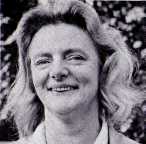 |
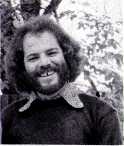 |
|||
|
CANDIDA TOBIN
|
GILBERT BIBERIAN
|
||||
|
offers to teach at other schools simply because only Chiswic was willing to accept his ensemble approach.
"I know of no other school where ensemble is part of the curriculum as a full-time thing," he said.
His afternoon class had a two-fold purpose, 1. technique and 2. Repertoire ("Creating our own repertoire.") Students bring, their works to class and perform them as a lesson in interpretation. One student was transcribing La Oracion del Torero ("The Bull-Fighter's Prayer") by Turina from its string quartet status into a work for four guitars. Biberian said the work originally was scored for four Spanish lutes, and copies of the score were unavailable. Biberian had a great deal of dialogue with his students.
The evening "ensemble class rehearsed the familiar Telemann work originally for four violins unaccompanied--played from the violin score rather than as a transcription. Biberian directed as would an orchestra conductor, stopping to comment on the dynamic markings, phrasing and general musicality of the performance.
"Music without dynamics and color is not music," he commented. "You breathe with me."
Also: "Create Magic. Grasp something. That is what music is about."
Biberian said he commonly conducts his ensemble class (we counted 14 members present) from music scored for other instruments. Such a practice could open new vistas for the teacher with limited guitar ensemble music at his disposal. Chamber music of most any sort would apply. Students in Biberian's class attempted whatever clef they were given, good practice in sight-reading.
Biberian is an urbane Londoner who retains his Mideastern hospitality.
|
|||||
|
By Ruth and Jerry Mock
We found an abundance of ideas and new approaches in England. For instance, we met Candida Tobin, who teaches music theory by colors. We watched Graham Wade teach classes of adults classic guitar on several levels. And we attended with interest an exciting program on guitar ensemble held by Gilbert Biberian at Chiswick Polytechnic in London.
Candida Tobin applied her ideas about color when teaching music at a secondary school. She wondered that music so bored the students, so started teaching them theory in color--A is blue, B green, C yellow, etc. The response was so great her method found its way into print, and is being taught to the children of Hertfordshire. Candida also adopted the French system of counting (Taa aa aa aa instead of 1-2-3-4) and shoved aside the notation commonly used in Britain (quavers and crochets) in favor of fractional notation (eighth notes, quarter notes, etc.) Her success with her approach to music has met with fierce resistance in academic circles, and a group formed to ask her out of the county--on the grounds that if someone didn't stop her she would make musicians out of all of the county's children. She has published the Tobin Guitar Instruction Kit which uses her color approach, and is busy planning another manual on harmony, composition and scales. The guitar kit includes a wall chart, explanatory booklet, sheets of music, and colored stickers to attach to the guitar. It is published by Helicon Press, The Old Malt House, Knight St. , Sawbridgeworth, Hertforshire, England.
Like Candida Tobin, Gilbert Biberian is a dynamic individual, enthusiastic and knowledgeable about his specialty--guitar ensemble. Chiswick shares its campus with an elementary school. Biberian declined
|
|||||
|
|
|||||
|
|
||||
|
CREATIVE GUITAR INTERNATIONAL
|
14
|
|||
|
|
||||
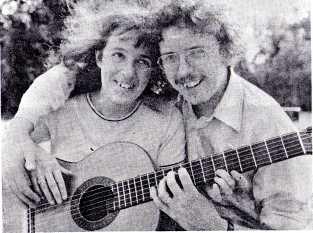 |
15
The next week we attended a performance of the Omega Guitar Quartet in Wigmore Hall which included the same Telemann work. Watching the four professionals perform as a quartet is an exciting event.
"I think it is an integral aspect to have requintos, " said Biberian. The requintos, tuned up a fourth, are used for extra range, giving the guitar over four octaves. (The requinto originally was tuned up a fifth, hence the name). Retuned a fourth, the requinto at the nut position plays like a standard guitar at fifth position. In Biberian's Greek Suite* parts can be transcribed down four notes and performed on the requinto as if it were a standard guitar.
From the first it was obvious that the Omega concert would be full of surprises. The program began and ended with older music, with the new sandwiched between. Much already has been written about new music for the Omega (see Vol. 3, #1, pp. 3-7). True to what is almost a tradition by now, the quartet performed three new works. Concerto for Four Guitars (1973) by Aurelio Peruzzi, and Sonata Fantasia (1976) ~by F. Moreno Torroba were dedicated to the quartet. The third newcomer was Progression, Op. 77 by Jacques Cerf, subtitled "Choreography for Four Guitars." John Taylor, a new member of the quartet, wrote the interesting and informative program notes. Taylor likened the Cerf work to Haydn's Farewell Symphony in reverse:
|
|||
|
|
||||
|
BETH AND GRAHAM WADE
When we declined a 11 p.m. tea at his apartment on the grounds of the late hour, he offered to serve it to us on the sidewalk. His American wife Marianne saved the night by inviting us in. Colin Cooper joined us in tiptoeing upstairs so as not to waken the neighbors.
"I think it is time the guitar quartet had one work for the entire half of the concert like the symphony " said Biberian on another occasion. He is working on his fourth Quartet. "The guitar is in its infancy.. . I had hoped with the advent of ensemble that the guitar would get into adolescence."
Recently Biberian wrote an ambitious work, Angelus, in the rental library of Theodore Presser. The work calls for a string trio, string orchestra, flute (predominant), soprano solo, piano, two choirs, two brass trios, 10 guitars, two conductors (one for choir and one for brass). The guitar part has various effects such as weaving a knife through strings (Nos. 2, 4 and 6 on top) and vibrating them. Recently Biberian has been studying composition under Hans Keller, head of music programs at BBC.
During teatime at Chiswick we met another composer, J.J. Myhill, who had just written a trumpet concerto which was to be premiered. Myhill also wrote a blues Prelude and Fugue for six guitars, performed by the Omega Quartet.
|
Instead of leaving the platform one by one, the players accumulate through the four movements, each newcomer announcing his arrival with a short passage using material from the previous movement, before joining forces for the next. After the slow, expansive Solo, Gilbert Biberian is joined by Colin Downs on requinto for the Pas de deux, with its fast rhythmic interplay. The Trio's main section has a little tune as simple as a nursery rhyme. By this time the range of the ensemble has been further increased by the arrival of Bernard Watson playing, instead of the seven-string guitar specified, a normal guitar with the lowest string tuned down a third to C. Final ly the fulI quartet, including myself on a second requinto, launches into the Pas de quatre, a quick waltz.
The Omega Quartet displayed excellent ensemble, timing, intonation and overall sound. The new pieces showed special polish, which illustrates the versatility of the group, as well as some of its problems. Unlike most professional guitarists who change their repertoire gradually, the Omega Quartet has developed a fantastically varied repertoire, which includes exciting new music written by Biberian and others. They have received critical acclaim, but deserve more. In fact one guitar critic (who used Taylor's notes without giving him credit) wrote as if he expected another new work at the next Omega concert.
At our invitation, Biberian kindly offered suggestions to us, which
(continued on page 17)
*Unpublished but performed on the record Omega Guitar Quartet by President (PTLS 1066). About 1,000 of the discs were printed, and although apparently not available in the U.S. , it should be.
|
|||
|
|
||||
|
|
||||
|
CREATIVE GUITAR INTERNATIONAL
|
16
|
17
we already have put into effect. He told us that one of his recordings had to be redone because one of the players in the Omega Quartet made a noise with his nose during rhythmic passages (one of our ensemble members has ceased to snort on entrances.) Biberian reminded us that rests and endings need to be clearly stopped, so the sound does not continue and fade or run into the next notes. Fingering in higher positions needs to be basically on the treble strings, because of intonation problems in relation to bass strings. Also fingering in higher positions should be consistent between parts (i.e., when in the same register, each part should be more or less in the same position.) He also suggested the use of the requinto. We will appear in concert on the West Coast in 1977 with two requintos tuned up a fourth and played an octave higher in some of our music.
|
||
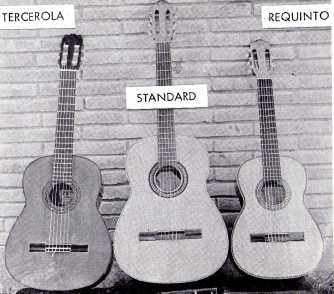 |
||||
|
Graham Wade has a unique position as lecturer in guitar at the Leeds College of Music. His position as a fulltime lecturer in guitar is one of only two such in England. Although the college in Leeds, northern England, specializes in light music. Wade's instruction is strictly classic.
"I am guiding these students to become teachers," he said. He is especially knowledgeable in preparing students for grade examinations (for music required at various grade levels, see syllabus series. The second story is on pp. 23-26.)
We attended several of Wade's class meetings. One group of about 10 completing their first year played an anonymous Renaissance piece from the second exam book published by Trinity College of Music, London (for address of Trinity and its publisher, see Vol. 3, #3, p. 5). Class members played the piece several times as a group, then individually. Wade talked about how to practice, how to sing the piece, and how to memorize. Later they read through most of the pieces in the first two Trinity books They were a beginning adult education class. An advanced adult education class worked similarly on the Villa -Lobos "Etude" No. 1 and a Bach "Prelude in D minor." One lady had to leave the night class early to catch a train to her home 20 miles away.
Wade and his wife Beth perform as a piano-guitar duo (see Vol. 2, #3, pp. 30-31.) They plan to visit the U.S. and CGI will follow their tour plans. American audiences will not be disappointed in the literature and dynamic control evidenced in the Wade-Ecker duo. There is a growing interest in the guitar-piano duo. For example, recently in San Francisco, Charles Richard, guitarist, and Wyatt Insko, pianist, performed, as a team, guitar and piano works of the 19th century. Richard played an 1810 Lacote guitar and Insko an 1808 Clementi Forte piano.
We visited the Leeds City Art Gallery where Rose Andresier performed on a lunch time music program. Her program was mostly contemporary British music. That evening at the Wade home, she commented that audiences are nicer to amateurs than professionals. She said the ordinary audiences respond more than guitarist audiences. The first words said to
|
||||
|
Three sizes of guitars
A comparison of the requinto (pronounced ray-keen-toe), the tercerola and the standard guitar. The standard guitar shown is not a concert guitar. From nut to bridge, the above guitars measure: Standard, 25 5/8"; tercerola, 23 3/8"; and requinto, 23." (Our concert guitars measure 26 1/8" from nut to bridge). According to Domingo Prat's Diccionario de Guitarristas, the requinto is used in some regions of Spain, along with the standard guitar and other instrument, to harmonize popular and dance songs. Prat says retuning the requinto is common. Apparently the requinto still is common in Spain as we saw one in a guitar maker's shop in Palma de Mallorca in the summer. The requinto and tercerola are used in Mexico, the requinto by singing trios, especially for melody with thirds, and for a high tremolo melody. Sometimes the requinto is cut away so the high notes can be more easily played.
WANT AD: MAIL ORDER SERVICE. Comprehensive catalog of 1,000 classical guitar methods, sheets, studies, and collections. Supplements of new publications and additions to the catalog every 2 months. Complete yearly service for $3. (Western and Midwestern states only). Overseas S6. Guitar Studio, 1433 Clement St., San Francisco, CA 94118.
|
||||
|
|
||||
|
|
|||||
|
18
|
Back Issues Available
|
||||
|
|
|||||
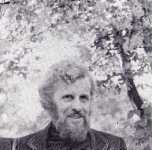 |
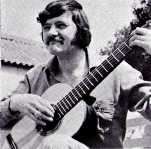 |
Back issues of Creative Guitar International, in its fourth year of publication, are $3 each from Box 7, Alpine, TX 79830. Below are summaries of contents by issue:
|
|||
|
New Era of Guitarists? Vol 1 No 1 and Romantic Bach,
about the duo Beltrdn-Costero, their practice habits, the duo repertoire and their performance, plus a record review. Teaching Problems: Parents, on how to teach guitar to children. Also dissertation reviews.
Guitar in Mexico, first Vol 1 No 2 °f a two-part story on
music, guitarists and institutions of Mexico. Teaching problems: Materials, on materials available for beginning students and how to use them, and use of the metronome.
Guitar on Campus, Vol 1 No 3 Conservatory training
a help or hindrance? Its merits, drawbacks are discussed. Teaching Problems: Materials, Part 2, discusses chamber music, the use of the tape recorder in teaching, and gives some advice on technique practice. Also Guitar in Mexico, Part II, and No Small Responsibility by Patrick Read on artist management.
Let's Give the Kids a Vol 2 No 1 Break: Musical Greats: Talent or Opportunity? In Lieu of a Review (In Search of the Sixth String). Urn Pa La A, a review of Lois Shishido's method of teaching time. Hints from Mario Beltrdn, Guitar on Campus.
War Brought Nylon Vol 2 No 2 Strings, the first of a
series of articles about nylon strings, how they started and changes, planned or needed. On Sources for Music: Dr. Thomas Greer explains tablature notation and Librarian Marilyn Nicely gives advice on how to find guitar materials in the library. Also Stravinsky on Four Guitars, More About
|
the Needs of Children, On Care of Nails Repair: Cracks Near Bridge.
Guitar Ensemble on Vol 2 No 3 three continents.Grants
available for musicians. Giuliani: A New Look. Bartdk and Tansman: Modern Pieces for Study, Charles Richard about easy music by two modern composers. Baroque Style, are-view of an article by Dr. Peter Danner on Baroque guitar music performance. The Sound and the Strings, in which Research Editor Frank Wagner writes about the physics of strings, with scanning electron microscope pictures of strings. Also Colin Cooper about a guitar with two backs. Repair for the Average Player.
Omega Quartet: New Vol 3 No 1 Directions, with story
by Gilbert Biberian, and bibliography of Biberian's works. Barrios: Modern Troubador by Colin Cooper; and Mangore Revival Timely, with listing of Barrios compositions in print. Carrillo After 100 Years, first of a three-part series by John Ford about the Mexican composer, includes list of Car-rilloguitarworksand facsimile of manuscript. Composing Around a Fret describes Reed Maxson's new method of composition and includes music of his Prelude. Also Guitar in Poland, Holland, England.
Richard Stover about Vol 3 No 2 Alirio Diaz:Venezuelan
Virtuoso. Duarte: Composer and Critic, with bibliography of Duarte's original compositions. Colin Cooper about British guitarist Carlos Bonell. Music in the Mountains by Grete Dollitz. Frank Wagner writes More About Strings. Guitar in Russia. Guitar on Campus: Berklee. Record reviews by John W. Tanno. Guitar in England by Graham Wade. (continued)
|
||||
|
COLIN COOPER
|
TERENCE CROUCHER
|
||||
|
an artist after the concert are the most spontaneous, she commented.
Guitarist-composer Terrence Croucher (see Vol. 3, #3, pp. 28-30) believes the guitar is needed in ensemble with other instruments. He is composing a series of pieces with such combinations as the recorder family with guitar, using first only one recorder, later trios, quartets, quintets. In all he plans to write 21 volumes of instrumental combinations with guitar. Croucher sets aside a day each week for composing.
While in Mallorca at the Guitar Centre we found a lovely, near-life sized ceramic tile picture designed from the cover of Vol. 3, #3 by Croucher's wife, Marlene. The huge mural was awaiting government permission to be displayed on the outside wall of the center.
Of special significance in our spring-summer tour of England were CGI contributor Colin Cooper and his wife Maureen, who were untiring and gracious hosts for part of nine days. Cooper, who writes for several international publications, carted the Mock family to all of the London area performances, including a program for the Pendon Guitar Society in Russell Square in London. Ensemble was part of their program at the Mary Ward Centre. Donald Florence, who teaches at the center, was an original member of the Omega group before it became a quartet, and continues to perform with another guitar quartet.
|
|||||
|
WANT AD: ORIGINAL COMPOSITIONS for the classic guitar. Free list. Lester Myers, HOW. Madison St., York, South Carolina 29745
|
|||||
|
|
|||||
|
|
||||
|
CREATIVE GUITAR INTERNATIONAL
|
20
|
|||
|
|
||||
|
First of a series giving syllabus information from three continents. Vol 3 No 3 ^e Original Classic Guitar (A 1776 Manuscript) with translations
of portions by Salvador Flares. Guitarist-singer Frederic Chrislip gives advice on playing and singing. Reed Maxson writes on how to develop sight-reading. An essay on music editions by Michael Decker. Harold Bellman Green comments on his compositions. Segovia Ends Teaching Project. Bibliography on music for four guitars. Stories about Aaron Shearer, Terence Croucherand Carrillo. Some thoughts on practice by Patrick Read.
How to get, promote concert
Jeremy Sparks of the Buffalo Guitar Quartet wrote that "The Mock Family seems to be quite a successful group, judging from your recent concert tour. We are still struggling to 'get known'. Do you have any advice as to how to proceed in this area ?"
The suggestions below are for those who are their own agent, as well as those who are charged with promoting an event. We suggest that you consult experts as you need them. For instance, ask a newspaper friend (or pay one) to write a press release for you. Get a professional photographer to take your picture. If you are promoting an event, look to the members of your group for help. The posters of one of our performances for a society were drawn by one of its members who was an artist.
Those looking for performances and those seeking performers may have resources they don't know about. Some of our finest experiences were unexpected. The Dayton, OH, Society, for instance, and Dayton University, put us up in a penthouse (student housing, off-season), furnished food in the refrigerator, and in addition, two members invited us to dinner on separate occasions. They provided us with a wonderful experience because of the planning and thought they put toward our needs. Some groups were willing, but didn't seem to know what to do. Hopefully, this story will help them.
Here are suggestions for those seeking performances:
1. Write letters to those who might help you obtain a performance. The key is personal contact with a guitarist. society member, friend, etc. There is a diversity of interest in culture. There are many guitar societies. In each letter, enclose an attractive brochure with a brief description about you and your program. Tell him you wish to give a concert
|
in his area and ask if he can arrange one. It might even be as simple as performing for a group of friends in someone's home. Until you get well known, the exposure is more important than the fee. Also we found a variety of experiences helped our ensemble. For instance, we performed outdoors before about 700 people in Aiken, SC. Amplification was necessary, and although we opposed it, we went ahead. In addition the performance was broadcast live over a radio station. It turned out to be a learning experience. In seeking an engagement, solicit as much in advance as possible.
2. The reply to your question of an engagement will usually be yes, or no, and always "how much?" We require room and board plus a donation. The association with other musicians is worthwhile and enjoyable, whether it be eating shish-kabab with Gilbert Biberian in a small Greek restaurant in London, or dining with Siegfried and Claudia Behrend in a Bavarian Gasthaus.
3. Plenty of time ahead, mail the following, when possible: a) Program, b) Copies of reviews, c) A press release about your performance (which will save everyone time and have the correct information), d) A form which the person who arranges the concert will return indicating acceptance, names, addresses and phone numbers of persons for you to contact on arrival in town (at least two different numbers). e) Glossy photos (8 x 10) which should be sent immediately upon confirmation of your performance, although printed pictures should be included in your packet of information.
Here are suggestions for the sponsor:
1. Equipped with the program, press release and picture, check on performance sites such as the recital hall of the local university, the meeting rooms of the local library, auditorium of the local courthouse, churches, schools. In every community there are meeting halls, often available at no cost. Be sure to follow up any inquiry, and try another place if you get no immediate response. If you sell tickets you may consider renting a hall.
2. Publicity is important to both the performer and sponsor. We received a great deal of publicity as a result of our news releases and pictures, but mainly because someone took the trouble to get information to the right people. The sponsor should submit 8 x 10 glossys and press releases to local newspapers. Interviews can be arranged
|
|||
|
|
||||
|
|
|||||||
|
CREATIVE GUITAR INTERNATIONAL
|
22
|
||||||
|
|
|||||||
|
with the sponsor and/or performers on radio. TV and newspapers. The timing is essential, so consult someone, at each place you want to help you publicize your event as to when to submit information, etc. This should be done as soon as possible.
3. From our standpoint, an example of an ideal concert-workshop was held in Bedford, MA in July. Tillman Shafer sent a letter of introduction to "Dear Friends of Music" on July 1 to tell about the Mock Ensemble. He scheduled our concert at 7 p.m. July 22. a workshop on "Teaching Guitar to Very Young Children" at 1 p.m. July 23. and a concert by the Shafer Quartet and assisting artists July 23 at 7 p.m. Preceding the July 23 concert was a dinner for a small fee A form enclosed with the letter gave each participant a space to check which part of the guitar festival he would like to join. Concerts were free. The $10 workshop fee included a copy of the Mock Family method. Workshops scheduled at lp.m. provided more driving time for those covering longer distances. Some of the participants were housed locally. Informal chamber music sessions also were held.
To assure yourself of success, you must believe in what you are doing, be enthusiastic and aggressive about it.
Of course it is not necessary to start with a grand tour of the eastern U.S. and western Europe, but it is fun to try new territory. We already are planning to tour the West Coast and parts of Canada in 1977. For more information please write us at Box 7. Alpine. TX 79830.
|
23
|
||||||
|
This is the second in a series of articles and listings of guitar syllabuses from schools in England, Australia and Mexico. This article deals with grades three and four—early intermediate music for those who have overcome the initial problems of guitar playing. The third year of the methodology of Manuel Lopez Ramos is included in the fourth grade because the Ramos program is designed by years instead of grades, as used by the British and Australians. Except for Ramos, the syllabuses include sample music for the level. They offer a wider variety of music than Ramos, but the Ramos program includes more music. For example, the entire Grade IV Trinity book contains nine pieces—10 pages of music—including early lute music and the music of Bach, Logy,
|
 |
||||||
|
Carcassi, Diabelli, Sor, Poulenc, Tarrega and Dodgson-Quine. Under the Ramos program, a student would work roughly one-half hour a day on each of two studies weekly, making in all about 100 studies a year from Sagreras, Carcassi and Giuliani Book 1.
Music offered by syllabuses of the Creative Guitar International series this issue perhaps should be dedicated to those students Or teachers who want to work on or teach music in addition to the standard 19th century repertoire. The music for study ranges from Renaissance to the present.
|
|||||||
|
For instance, the list includes Simple Studies. Book 1. by Cuban Leo Brouwer, a contemporary composer for the guitar whose works are performed often, but who is little known in the U.S.
Joyce Sclar wrote in the Newsletter of the Guitar Society of Colorado that Brouwer is not known here "because he is a Cuban citizen and therefore banned from performing in the U.S. This is certainly America's loss."
|
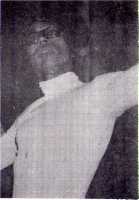 |
||||||
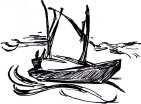 |
AVAILABLE THROUGH CREATIVE GUITAR INTERNATIONAL: Jn the Forest, By the Sea, At the Zoo By Terence Croucher Each S3
"I especially enjoyed the article on Terence Croucher and wish to order two more of his pieces." Carol Hayward, Bedford, MA,
|
||||||
|
Workshop.
|
|||||||
|
"The Little Boat" from By the Sea by Terence Croucher
Postage and handling included.
|
|||||||
|
Mock Family Classic Guitar Method (Vol. 1, age 3-adult) S5~795
M;ock Method and Sagreras 7.45
Sagreras 3.50
|
|||||||
|
Sclar wrote of Brouwer's appearance in the 1975 Toronto Symposium. where he performed traditional classic
|
Brouwer at Toronto symposium. Photo by Wynn Smith, executive director, Seattle Classic Guitar Society .
|
||||||
|
Order from: Mockingbird Press, Dept. 53, Box 7, Alpine, TX 79830
|
|||||||
|
|
|||||||
|
|
|||||
|
CREATIVE GUITAR INTERNATIONAL
|
24
|
25
|
|||
|
|
|||||
|
guitar music, then contemporary music, much of it his own:
Very experimental in nature, it left much of the audience puzzled but pleased at the showmanship. Brouwer accompanied a pre-recorded tape of electronic sounds; lie...played with a bow; he employed many percussive sounds all along the front and sides of the instrument with dextrous right-hand movements. His morning classes on contemporary music delved into these sounds and explored their growth in detail. Brouwer took small cells of rhythms and sounds, and distributed them (like cards) to six volunteering players. At his direction, they would each take their assigned slice of music and expand upon it. The multitude of new sounds from the guitar cheered and inspired all the participants.
Brouwer's Simple Studies are neither chance music, nor are they played with a bow. But he, obviously is a guitarist with a throbbing sense of thythm and a penchant for rare intervals. His music is exciting, guitaristic, and in this case, mostly easy.
Brouwer's background shows exposure to a variety of important artists. He studied under Vincent Persichetti and Stepan Wolpe at the Julliard School in New York. 1959-60 . and under Isadore Freed and Joseph lactone at Hartt College of Music in Hartford. CT. Helms played and conducted music by Ives, Cage, Kotonsky, Nono, Kagel, Cardew: he has been influenced by the style of artist Paul Klee, and the writings of M. Ghyka and Iannis Xenakis. He has also been associated with members of the Polish school. Luigi Nono. and Hans Warner Henze.
Brouwer is director of the experimental department of the Cuban film industry, where he has composed scores for more than 40 films. He also is a conductor, percussionist and teacher. He also taught harmony, counterpoint and composition at the National Conservatory in Havana, and during the 60s received financial backing from the Cuban government for work as a concert guitarist and composer. Among his writings is Sintesis de la harmonia contemporanea. vol. 1. published in Havana.
|
Tarrega's "Lagrima", and Ponce preludes. Ramos lists the Ponce preludes in the fifth year and Bach in the seventh.
Apparently the most extensively used volume in grades 3 -4 is the 25 Studies from Carcassi, Op. 60, included by all the schools, and used extensively by Ramos in the third year.
|
||||
|
The Royal Schools of Music syllabus is included here for the first time since that syllabus begins at grade three. The Royal Schools syllabus was compiled by Hector Quine with advice from John Williams.
The following abbreviations are used: A= Australian Music Examinations Board; G= Guildhall School of Music and Drama, London; L= London College of Music; LR= the methodology of Manuel L6pez Ramos; R= Royal Schools of Music, 14 Bedford Square, London, WC1B 3JG; and T= Trinity College of Music. For other addresses see Vol. 3, #3, pp. 3-5.
|
|||||
|
Grade 3
Aguado: Lesson 25 or 28 (Suvini Zerboni 6404, pp. 21-22), A. Waltz, T. Anon: Bounce, Allemande, Intrada, T. Allemande (No. 1 of Renaissance Dances, ed. Scheit, U. E. 13070), G. Adagio (No. 1 from Baroque Airs and Dances. Universal 13069); and A Toy (No. 1 from Easy Pieces From Shake-speare's Time, Universal 13973), R.
Brouwer: Simple Studies, Book 1, any one except "Choral" (Eschig), A.
Carcassi: "Andantino" (No. 1, Op. 21, Schott, GA 6), G. Study No. 13 from 25 Studies (Schott GA 2), L. 24 Short Pieces, Op. 21, No. 12, "Minuetto" (Schott GA 6); and 25 Melodious and Progressive Studies, Op. 60: No. 3 (Schott, GA 2), R. Op. 60 No. 4, 8 or 10 (Schott, GA 2), A.
Coste: "Barcarole, " T.
Da Crema: Antologia di Musica Antica, Vol. 2: "Ricercare" l,~Il or III (Suvini Zerboni 7115), A.
Duarte: Some of Noah's Ark: "The Frog, "
|
or "The Donkey, "or "The Flea" (Ricordi LD 583); and Sex Easy Pictures: "The Wind, " "Folk Song, " or 'Eastern Dance" (Novello 12043904).
Giuliani: "Allegretto", T. 24 Studies, Op. 48: No. 5 (Schott GA 32), R.
Hollier: Six Traditional Songs: "Nuts in May, " oT^Polly" (RicordTSD9).
Legnani: "Caprice" No. 9 from 36 Caprices, Op. 20 (Schott GA 35)7 L.
Logy: "Aria, " T.
Milan: El Maestro; "Pavane V" (Suvini ZerbonrS405), A.
Ponce: "Prelude No. 6" (Schott GA 124), L.
Roncalli: Suite in A minor: "Sarabanda" (Schott 105427, "R._
D. Scarlatti: Five Pieces: "Aria, " Longo 423 (Schott GA 288), L.
Sitsky: Six Israeli Dances: "Circle Dance No. 2" or "Acceleration Dance" (Ricordi SD 10), A.
Sor: 20 Minuets: No. 5, L, A; No. 3, G, R; and No. 5, G. "Andante I" and "Andante II", T.
|
||||
|
Also notable in the list are Poulenc's "Sarabande": two pieces from Castelnuovo-Tedesco's Appunti. Book 1:
|
|||||
|
|
|||||
|
|
|||||
|
CREATIVE GUITAR INTERNATIONAL
|
26
|
27
|
|||
|
|
|||||
|
Tárrega: "Lagrima" (Ricordi BA 7925), L, G; also (Universal 13408), L, R. Studies: No. 1 in C (ed. Savio, Ricordi), R.
Valderrabano: Hispanae Cirharae Ars Viva: "Soneto I" or "Soneto II", AT
Grade 4
Aguado: Study 5 or 6 (Suvini Zerboni 6404, pp. 26-28), A.
Bach: 3rd Lute Suite: "Sarabande" also "Bourree (U. E.11202), G, A. Prelude in D minor (BWV 999, Schott GA 106), R. "Sarabande, " T.
Carcassi: "Allegro, " T. 25 Melodious and Progressive Studies, Op. 60 (Ricordi), LR. No 7 (Schott GA 2), R, G, also No. 10, G, and 3 or 19, A.
Castelnuovo-Tedesco: Appunti, Vol. 1: No. 1 or 2 (Suvini Zerboni 6725).
Chilesotti: Six Lute Pieces, LR. De Visee, Suite in D minor (ed. Scheit, Universal), LR. Suite No. 9 in_D minor: Any two movements (Eschig 77687, A.
Diabelli: "Minuet", T. Three Sonatas: "Minuett" and "Trio" from No. 1 (Schott GA 57), R.
Dodgson/Quine: 20 Studies: Book 1, No. 1 (Ricordi), TJ and "Prelude", T.
Duarte: For My Friends: "Prelude" (Columbia Music Co. 183), A.
Giuliani: Guitarists Hour, Book 3, No. 8, "Sonatine in C" (Schott GA 21), R.
"Rondo in C", Op. 11 (Bote 7 Bock/ Schott), L. Giuliani, Book 1 (Ricordi), LR.
Holborne: Six Lute Pieces: "Piece Without TitTeT" or "Heigh Ho Holiday" "(Berben 1725), A.
|
Hoi Her: Six Traditional Songs: "Rock-a-bye BcE/' (Ricordi SD 9), A.
Legnani: 36 Caprices: "Allegro" No. 2 (Schott GA 35), L.
Logy: Partita in A minor "Aria" (Universal 12102), R. "Gigue, " T. Partita in Cj any two movements (Universal 14454), A.
Milan: 6 Pavanes and a Fantasia: "Pavan" No. 1 in A minor (Franko/ Colombo/Ricordi FC 2090), L. "Pavane III" (Schott GP 1003), G.
Mudarra: Hispanae Citharae Ars Viva: "Gallarde" (Schott GA 176)7~A\
Pisador: Hispanae Cithrae Ars Viva: (arr. Pujol, Schott GA 176), R.
Ponce: From Schott GA 124: "Caprice" No. 1, L; and "Prelude No. 6 in D mi nor," R; from Schott GA 125: "Prelude" 10 or 11, A.
Poulenc: Sarabande (Ricordi), L, G, A. Also in Trinity series.
Sagreras: Method, Book III, LR.
Sanz: "Espanoleta" (Schott-Eschig 1049), L. Twelve Pieces: Any two not used in second grade except "Villano" (Suvini Zerboni 7609), A.
Segovia: Four Easy Lessons: any one (Celesta), A.
Sor: 20 Studies (Segovia edition): No. 6, G7L; No. 2 or No. 5, R; Nos. 3, 5 or 6, A. "Minuet", T.
Tárrega: "Adelita", LR; also (U.M.P.), R. Estudios: No. 3 in A Major (Ricordi BA 11386), G, R. "Estudio en forma de minuetto" No. 6 (Universal Edition 14430), T.
Tchaikovsky: Six Pieces: "Russian Song", or "In Church" (Novel lo 12.0108.05), A.
|
Madison group organizes
By Michael Wright
One of the significant extra-aesthetic benefits of the Mock Family concert and workshop in Madison, WI this summer was to provide the stimulus to form a Madison Classic Guitar Society (MCGS), which held its first meeting Sept. 19. The society hopes to provide a place for persons interested in classical guitar to meet informally, socialize and enjoy performances by members. It also intends to encourage ensemble playing, with guitars and other instruments. Eventually it will promote concerts by visiting musicians as well. It is sponsored in part by the Edgewood College Music department, where it meets. Its October meeting featured performances by George Lindquist, Michael Wright, and a special trio by Tim Farley, Robert Ruck, and Ron Wood. The meeting broke into smaller groups and attempted ensemble playing.
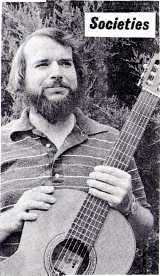 |
|||
|
A further note may be of special interest to classic guitar instructors. One of the society members has been negotiating with the Wisconsin Music Teachers Association (WMCA)(an affiliate of the Music Teachers National Association) for certification, in an attempt to encourage guitar in the music establishment, and generally to improve the level of guitar instruction in the state. Mrs. Margaret Adrian, WMTA certification chairman, attended the initial MCGS meeting and expressed interest of the WMTA in expanding its certification to classic guitar. Since this is new, the WMTA will be working with the Madison Classic
|
|||||
|
|
|||||
|
MfCHAEL WRIGHT
|
|||||
|
|
|||||
|
|
|||||
|
CREATIVE GUITAR INTERNATIONAL
|
28
|
29
|
|||
|
|
|||||
|
Guitar Society membership to help establish good criteria for certification examination standards, including theory and grading of performance levels for students, who are required to represent applying teachers. Write: Michael Wright , Madison, WI 53705, or Mrs. Margaret Adrian, WMTA Certification chairman, c/o Indian Echoes Resort, Montello, WI 53949.
MELBOURNE, Australia—Some advice to guitar teachers: "Do not stick on your own—contact other teachers! Be on the lookout for other kinds of music'. Don't shy away from new techniques. Use the tape recorder as a teaching aid as it is very valuable. "
The advice came from John Mills in an intervie with Brian Lowe for the Journal of the Society of the Classic Guitar, Melbourne. What are the signs of a good teacher?
"What I'm afraid of is guitarists going into teaching because they have to. This is not good! The signs.. .patience, an acute ear, a basic love of music and a basic love of people.. .Schools should get away from class teaching of music... "
SEATTLE—Members of the seattle Classic Guitar Society meet at the home of Hugh Lade, president, to play quartets, trios and duos, from the extensive collection of the society. Much of the collection was made by the late Duncan B. McKenna and donated to the society by Mrs. McKenna.
|
brought to light in a story by Prof. Jozef Powrozniak, guitar teacher and director of the Music University in Katowice, Poland. The story, "Fernando Sor in Warsaw, " appeared in the newsletter Gitarre, published by Preissler Verlag, Munich, Germany, and was sent CGI by Polish correspondent Ryszard Pawtowski.
Fernando Sor (Jose Ferran Macario Sors) was one of the most famous guitarists of the first half of the 19th century, and his works for guitar are well known to present-day classic guitarists. He was also famous for his opera and ballet music. His opera, The Fair of Smyrna, and his ballets The Nobleman, The Beloved Painter, Cinderella and others
|
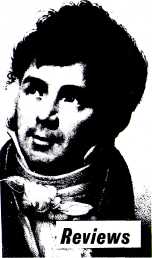 |
|||
|
SOR
|
|||||
|
were performed in English and other European theaters. Sor's fame as a ballet composer brought him to St. Petersburg, then known as the Paris of the North.
On his way to St. Petersburg, Sor gave a program in Poland. One of the Warsaw daily newspapers said the following of his impending performance: "Next Monday, Mr. Sor, Spanish guitar artist and composer, will give a concert in the Hall of the Theater in the Saxon Palace. He will play and sing; also his eight-year-old daughter will sing. "
The next day the publication noted a delay of the perform -ance until the next Wednesday. Powrozniak said such a delay was sometimes used to increase interest in the performance, but also problems sometimes resulted from such a delay, such as refunds on tickets.
|
|||||
|
HOUSTON—The Houston Classic Guitar Society is planning to sponsor a workshop by Pepe Romero in 1977 for the third straight summer.
Sor's daughter performed at 8
By Frank Wagner Research Editor
The last days of Fernando Sor and his grief over the death of his daughter in her 20s have been recorded. That she also sang was (next page) 1 - William Gray Sasser, The Guitar Works of Fernando Sor, University Microfilms, Ann Arbor, Ml, 1975, p. 74. The reproduction of much of the first half of this 1960 dissertation, in the CGI archives, is extremely hard to read. The claim of University Microfilms was: "This dissertation has been microfilmed exactly as received. "
|
|||||
|
Although as many as 1,000 attended concerts by some artists, one journalist reported that 180 attended Sor's program. The journalist wrote: "This artist is himself an
|
|||||
|
|
|||||
|
|
||||
|
CREATIVE GUITAR INTERNATIONAL
|
30
|
31
|
||
|
|
||||
|
unquestioned virtuoso. The guitar, which properly is used as an accompaniment for singing, was played by Mr. Sor in a manner that the finest taste of musical cultivation was enspirited."
"The listeners applauded the guitar music yesterday, but one should regret that children have to appear again and again to prove their talent when they should not be there in as much as talent should be praised and rewarded only in later years."
(Editor's note--Obviously prejudice against children performing is nothing new.)
One can see, wrote Powrozniak, that Sor's appearance in Warsaw was not successful. There was no enthusiasm as was seen in other cities. The guitar was not considered a full instrument at this time.
Sor studies recorded
Jose" Luis Lopategui, FerranSors, Discos Edigsa(Spanish Music Center, New York).
|
as interesting musically. In fact, Op. 31, No. 6 was my only assignment for one year. My first guitar teacher, Angel Arrellano Gonzalez of San Miguel, Guanahuato, Mexico, fell and broke his hip the morning after he assigned me No. 6 to practice. Since I had no other assignment, or teacher, I practiced pieces in Opus 31 for that year. No. 7 is similar to No. 5 in the Segovia edition. No. 1 is a very easy piece often found in beginning tutors. Several of the pieces are very melodic.
|
|||
|
Lopategui also avoided duplicating pieces in a similar record by his former teacher, Narciso Yepes on Deutsche Grammophon 139 364. The Lopategui record certainly compares favorably with the Yepes disc. The Lopategui disc contains rhythmic accuracy, excellent articulation, appropriate phrasing. His attack brings out an interesting set of sounds. Lopategui also has edited a new edition of the music of Sor Opus 31 and 35, as well as Opus 60. Inhis introduction to Op. 60 he said his reason for the new edition was that he noticed the lack of fingering indications on music editions and wanted to correct the omission, which he did. JHM
|
||||
|
Polish music lyrical
|
||||
|
Fernando Sor was born and raised in Barcelona, and studied music in a picturesque monastery in nearby Montserrat, near the top of a jagged mountain.
|
||||
|
By Reed Maxson
Stanislaw Mronski, Cztery Utwory (Four Pieces), 1972. 1. Preludium, 2. Toccatina, 3. Fughetta, 4. Postludium.
An award winner (see CGI, Vol.3, No. 3, p. 33), this work is accessible to the upper-intermediate level guitarist, but beware: There are a few errors in the fingering and some omitted accidentals which can be especially problematical in 20th century music. Also, the endings seem a bit abrupt, and in Nos. 2 and 3, 19th century cadential formulae terminate these otherwise 20th century pieces, so the performer must take special care in making these endings convincing. Be that as it may, this music is lyrical, guitaristic, interesting, and a good addition to the literature.
Also by Mronski in the same volume is Hommage A Chopin, 1971-72, in five sections: 1. Preludium, 2. Mazurek 1, 3. Nokturn, 4. Mazurek II, 5. Polonez. These pieces vary
|
||||
|
Sor lived in troubled times (1778-1839) and was a victim of those times as was his music. Less than half of it has survived. Fortunately, a great deal of his guitar music remains. It is perhaps appropriate that Sor studies were recorded by a guitar professor at a Barcelona music conservatory, José Lopategui. Since Barcelona is in Catalonia, the record bears the original Catalan version of Sor's name.
Lopategui has chosen to record 12 studies each from Opus 31 and Opus 35. From the standpoint of the student and the listener his choice of pieces is good. There is little duplication of the Segovia edition of Sor studies. Most of the pieces chosen by Lopategui are easier than the Segovia edition, but still are good student material, and most are
|
||||
|
|
||||
|
|
||||
|
33
|
||||
|
|
||||
|
CREATIVE GUITAR INTERNATIONAL
|
32
|
|||
|
|
||||
|
somewhat in difficulty. Two or three could be included in the repertoire of the intermediate player, while the entire work might be performed by the more advanced guitarist. The style vacillates between post-and neoromanticism, appropriately. It is lyrical with very "listenable" melodies and textures, and is enjoyable to play. This work may be of special interest to Chopin-lovers.
Karl Kohaut, Sonata in D, before 1765, Oxford University Press. Transcribed from lute tablature, edited and fingered for guitar by Gerard Reyne. In three movements: Adagio, Allegro, and Minuet, with a total duration of about nine minutes. Upper-intermediate level. Includes useful editorial notes.
ALSO RECEIVED
|
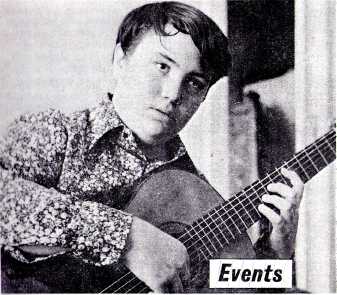 |
|||
|
Lance Bosman, Dance of the Eighth Veil for three guitars or three guitars and two recorders, Broekmans & Van Poppel, Amsterdam.
Colin Cooper wrote that Bosman is a "friendly man with an obvious enthusiasm for the guitar. , . His enthusiasm communicates itself to you so that you learn willingly. A keen cyclist, he propels a lean, mean racing bike through London's dense traffic at astonishing speeds and what appears to be a high personal risk. "
Bossman's Dance is a pleasant, easy ensemble piece with a Mideast flavor in the way of minor scale passages, a lively rhythm, and slurring. Themeasures are numbered and most instructions are in English (loud instead of f, or ff, etc.) JHM
LoisShishido, Where's That Note, Box 127, Buena Park, CA 90621: By the author.
This revised edition enlarges and improves on the original version (See Vol. 2, M, pp. 19-20 for initial review). The new edition is 58 pages (the old was 30) and includes melodic lines of simple studies by early composers such as Sor, Sanz and Carulli. More welcome guidance in a neglected field. A footnote: Shishido wrote thatYoshioMatsumoto, student from Japan who has assisted her (see Vol. 3, No. 1, pp. 23-24) has been given a gift award (tuition) as a guitarist, from the San Francisco Conservatory. JHM
Scott Tennant will be 15 in March. He reminds me of pictures I have seen of Julian Bream when he was very young. I attended a recent recital he gave at the Yorba Hotel in Detroit managed by his parents, who enthusiastically supported his efforts with the guitar.
|
||||
|
SCOTT TENNANT
|
||||
|
Scott's mother told me of how she was awakened one night by a call from Pepe Romero asking if he could perform in Dallas because the scheduled performer was ill. Scott and his mother were in Houston where he attended Romero's workshop. Scott and his mother took the plane to Dallas the next morning and he performed that night. He was invited to perform again.
After the recital I spoke with Scott's first teacher who taught him to play with a pick. She wondered if her lack of classic guitar background had held him back. She had hesitated to teach him at six and did so only at the urging of his mother.
Although his tempos were somewhat fast, he played in a
|
||||
|
|
||||
|
|
||||
|
CREATIVE GUITAR INTERNATIONAL
|
34
|
35
of striking music from this enterprise, but the news reflects once more the slow but steady increase of interest in the guitar as a serious contemporary instrument.
Colin Cooper
ALMEIDA FOLLOWS PREMIERE OF HIS WORK
Laurindo Almeida performed on the Atlanta Symphony Orchestra summer series. His appearance on stage followed a world premiere performance of Latiniana which he composed with an Argentinian friend. The Altanta Symphony sight read the piece, which had arrived only the morning of the performance. Almeida performed on his guitar made with a nook on one side. A friend made it for him, and Almeida said it went well with his style of playing and was easier to play the higher notes.
COURSE PLANNED IN MALLORCA
Peter Burr of Centro de la Guitarra Espanola, Palma de Mallorca, Spain, wrote that an English magazine is planning a holiday guitar course at the center in March. Write Burr at Montenegro 10, Palma.
EASTMAN AWARDS SUMMER SCHOLARSHIPS
The Eastman School of Music, Rochester, NY, awarded seven young guitarists special summer scholarships for its All-Guitar Workshop held in August.
Recipients were Jay Rothman, a faculty member at Denver University and assistant to Ramon Ybarra, a workshop faculty member; Ronald Provenzano of Fairport, NY, and Charles Dye of Penfield, NY, both instructors at the Barley School of Music in Falirport, NY; Edward Taylor, music faculty member at the' Pittsford, NY school system; Larry Johnson, guitar instructor at Nazarath College of Rochester and Roberts Wesleyan College, North Chili, NY; and Donna Vince, a Rochester high school student.
Dr. Donald J. Shetler, Music Education Department chairman at Eastman, wrote CGI that the all-guitar workshop was most successful and the school intends to "explore the offering again next summer with certain modifications."
Funds for the scholarships were provided by the National Musical String Company, Inc. , of New Brunswick, NJ.
|
||
|
very precise manner with a strong left hand. As he performed, Scott gave the background on each composer. I was impressed that he not only performed the music extremely well, but had a special interest in the music he played and obviously enjoyed educating his audience. He plans to study musicology, become a concert guitarist and give workshops.
At 14 Scott has already attained a performance technique better than many concertizing guitarists. But now he is working to develop his musicianship, which will broaden his prospects in music.
It is difficult to believe that one so young can perform with such fantastic technique. His boyish smile and his way of identifying with the still younger Mock children remind me of his youth. Ruth Mock
FESTIVAL PLANNED IN MARTINIQUE
Nov. 26-Dec. 12, Guitar World Festival in Martinique. Workshops will be held on the basic Spanish repertoire of the classic guitarist by Alberto Ponce, and on contemporary and avant garde music by Leo Brouwer. Programs will also include guitarists John Williams, Rodrigo Riera, and AlirioDiaz. Write: Festival Mondial de la Guitare, Direction artistique: Robert J. Vidal; 4, rue Demarquay, 75010 Paris, France.
BONELL TO MAKE ENSEMBLE RECORDING
Of particular interest to guitarists in Britain is the news that Carlos Bonell, professor of guitar at the Royal College of Music and a performer of growing repute, is to make a recording with Pinchas Zukerman, the brilliant young violinist, and his wife Eugenia, a flautist of renown. The works are by Kreutzer, famous for his violin studies; Weber, whose centenary has recently been celebrated; and Molino. On this occasion Zukerman will be playing not the violin but the viola, to which instrument he has taken like a duck (or perhaps a trout) to water, as those who saw the TV performance of the Schubert Quintet can testify.
|
||||
|
Guitar fanciers cannot perhaps expect too much in the way
|
||||
|
|
||||
|
|
||||
|
CREATIVE GUITAR INTERNATIONAL
|
36
|
37
Also in England this summer was the editor of Creative Guitar International and his wife and family, the Mock family, Jerry, Ruth, Melody, Nelson and Julian. We were lucky enough to have them stay with us in the north of England, and they gave several concerts in schools and at the Leeds College of Music, to the delight of schoolchildren and guitar students who found the concentration and musicality of the family highly fascinating and impressive. Jerry and Ruth also held workshops on the problems of teaching music to children and their ideas were both stimulating and informative. We look forward to welcoming them to England again soon and their creative presence was a great pleasure to all of us.
Duarte conceals publisher names
John Duarte objected to a portion of a story in Creative Guitar International (Vol. 3, #2, p. 9) in which critic Colin Cooper reported a rumor that Duarte is employed as a reader by six English music publishers. Duarte wrote that the rumor is "not true now or at any other time.. ."
However, in reply to a CGI query as to which publishers Duarte serves or has served as a reader, Duarte replied: "... I shall not give dates and names of publishing houses."
Subsequently, Cooper wrote the following:
"John W. Duarte points out that he does not read for six publishers, as I suggested in a recent issue of CGI, but unfortunately does not provide much useful further information. I can understand his reluctance to 'tell all', but it will inevitably lead to more speculation and rumour. The ultimate answer, whether he likes it or not, lies with Mr. Duarte.
|
||
|
Letter from England: Bream event
By Graham Wade
The biggest event on the British guitar scene this year without a shadow of a doubt was the appearance of Julian Bream at the Wigmore Hall, London, on three consecutive nights in May to commemorate an important anniversary for the Wigmore Hall and Bream's own debut there 25 years ago. Also appearing with him were Peter Pears, Murray Perahia, Peggy Ashcroft, and the Gabrieli Quartet, and the three nights of concerts were acclaimed by critics and public alike as a magnificent celebration of both the magnificance of the Wigmore Hall and the similar magnificence of Britain's great guitarist whose achievements grow more splendid year by year.
But John Williams has also been extremely busy and his appearances throughout the country with several of his musical friends have aroused great interest as an accompaniment of marimbas, tabla, string bass etc. , have offered unusual versions of Daquin, Mozart and Telemann not to mention a new work for the ensemble by Brian Gasciogne. The ensemble has also released a record of their work offering the brilliance of Williams in yet another new musical context.
Guitar energies certainly seem to have been released in England this year and the summer has been a resurgence of concert activity of a very high level indeed all over the country. At the Brant Broughton Summer School for Guitar, near Lincoln, we were given a remarkable concert by Siegfried Behrend, the German guitarist who visits England all too rarely; his recital, interspersed with questions from students attending the summer school, was recorded by the BBC for their classical guitar programme, which included Peter Sensier. During the Brant Broughton week also were concerts by Neil Smith, Graham Wade, and John Mills, as well as a lecture by Gerry Kerr on the qualities that make up a good classical guitar. John Mills, renownedfor his Segovian tone and deep musical intensity, is shortly returning to Canada and the U.S. for an extended tour.
|
||||
|
"Meanwhile, I cannot be alone in wanting to know more about the commercial activities of music publishers. It would be interesting to hear from the younger generation of composers and arrangers, about their experiences, good or otherwise."
|
||||
|
|
||||
|
|
||||
|
CREATIVE GUITAR INTERNATIONAL
|
38
|
39
|
||
|
|
||||
|
Practice injures hand
A. John Mardinly of Ann Arbor, MI, wrote:
Last May (1975), while practicing vigorously in preparation for a master class with Manuel Ldpez Ramos, I suddenly began to have pains in the tendons in the fingers of my left hand. I have been told by so many reputable teachers that it is impossible to injure a hand by overpracticing, that I continued to practice, since music masks pain and makes it bearable. However, my condition grew steadily worse and I had to give up playing. In the nine months since then I have been to 18 doctors and none can find anything wrong, nor has any come up with any constructive therapy, nor has any ever seen a case as strange as mine. They have given my condition a name: Tendonitus, or tenosynovitus. The passage of time has given some improvement, but I still have less than 50% function of my left hand, and whenever I try to use my left hand (for any activity) the pain returns and the condition retrogresses. . ,
I have learned that conservatory students of piano and cello are warned of the hazards of overpracticing, Why guitar instructors cannot bestow this protective warning I do not know. . .
(Editor's note: Coeditor Ruth Mock wrote Mardinly that she once had to stop playing the violin for a year because of similar difficulties. When the Mock family performed for the Michigan Guitar Society in August, Mardinly told Mrs. Mock that he was receiving treatment at the Mayo Clinic in Rochester, MN, and was encouraged by improvement in his left hand. Also through CGI. Mardinly was able to get in touch with Vaughn Aandahl of Denver, who suffered a similar ailment (see Vol. 2, #1, p. 33).
CLASSIC GUITAR TEACHER DIRECTORY Three consecutive insertions, $7.50 for name or studio with address. Extra words $1 each. Phone $1. Send to Box 7, Alpine, TX 79830.
|
PETSCHAUER URGES ENSEMBLE PROGRAMS
|
|||
|
Dr. Roy Petschauer, guitar division chairman for the American String Teacher's Association urged educators to include guitar ensemble programs as part of the school music curriculum. Petschauer's plea was before the recent biennial convention of the Music Educators National Conference in Atlantic City, NJ.
|
||||
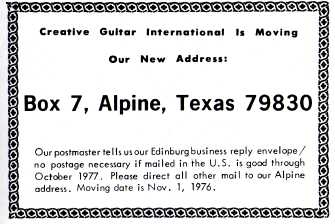 |
||||
|
Mock Family Concert- Workshops
Please write now for reviews, pictures and information regarding the Mock Family Concert/Workshop tour of the western U.S. and Canada during spring-summer 1977. Reviews of appearances in England, Germany, Spain, eastern U.S. are included. Workshops are:Teaching Classic Guitar and Ensemble to the Very Young Child. Also, a limited number of copies of the two-page letter "Mock Invasion, " on the Mock Family tour in 1976 are available on request.
|
||||
|
|
||||
|
PERINI MUSIC STUDIO Somerville, NJ 08876 Phone (201) 715-6767
|
CHARLES RICHARD
3 Fifth Avenue
San Francisco, CA94118
|
|||
|
|
||||